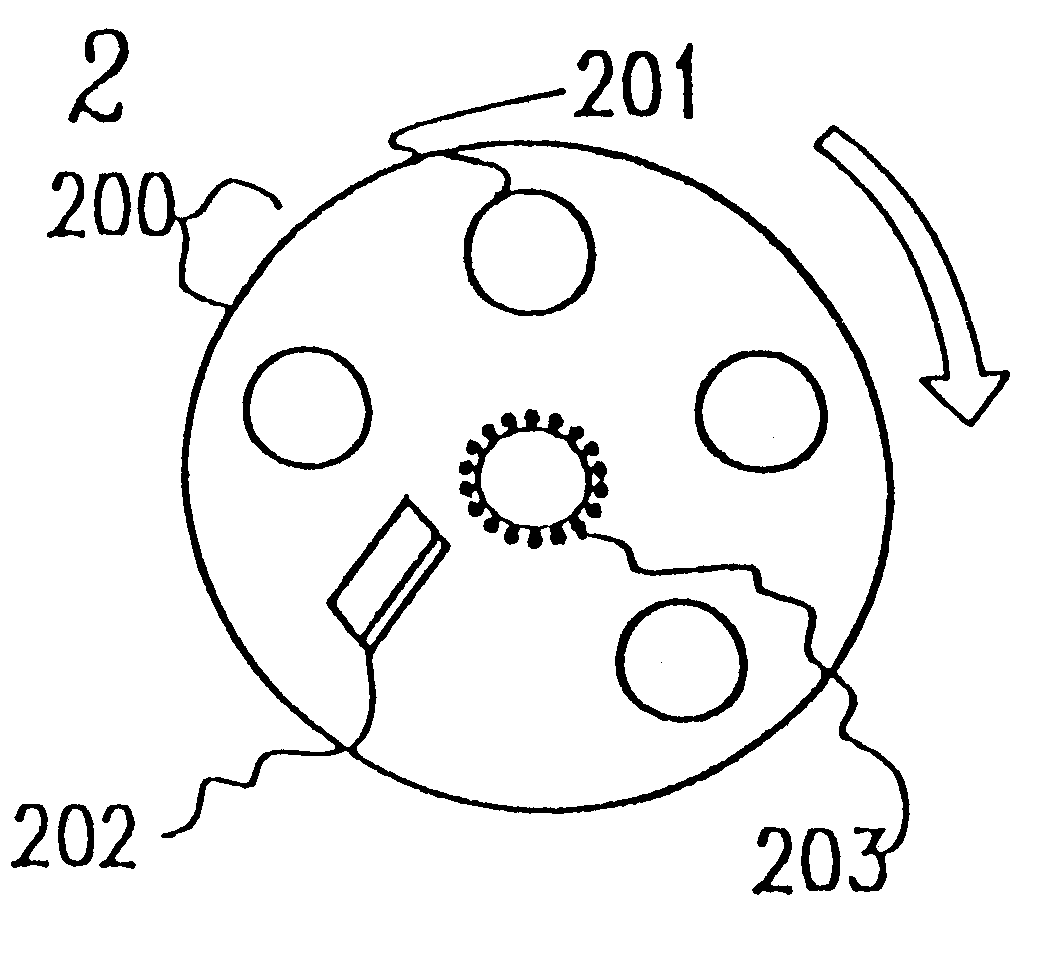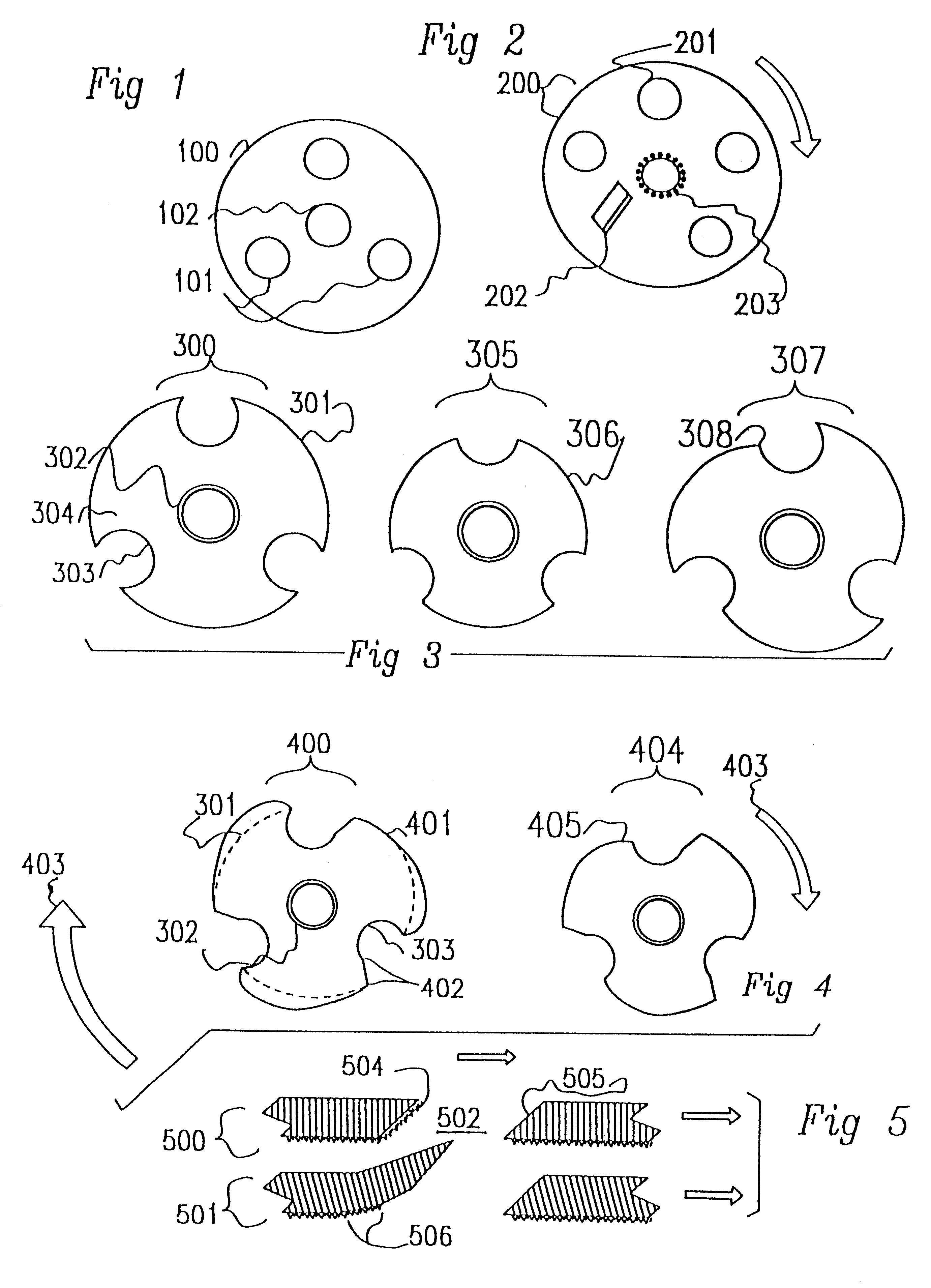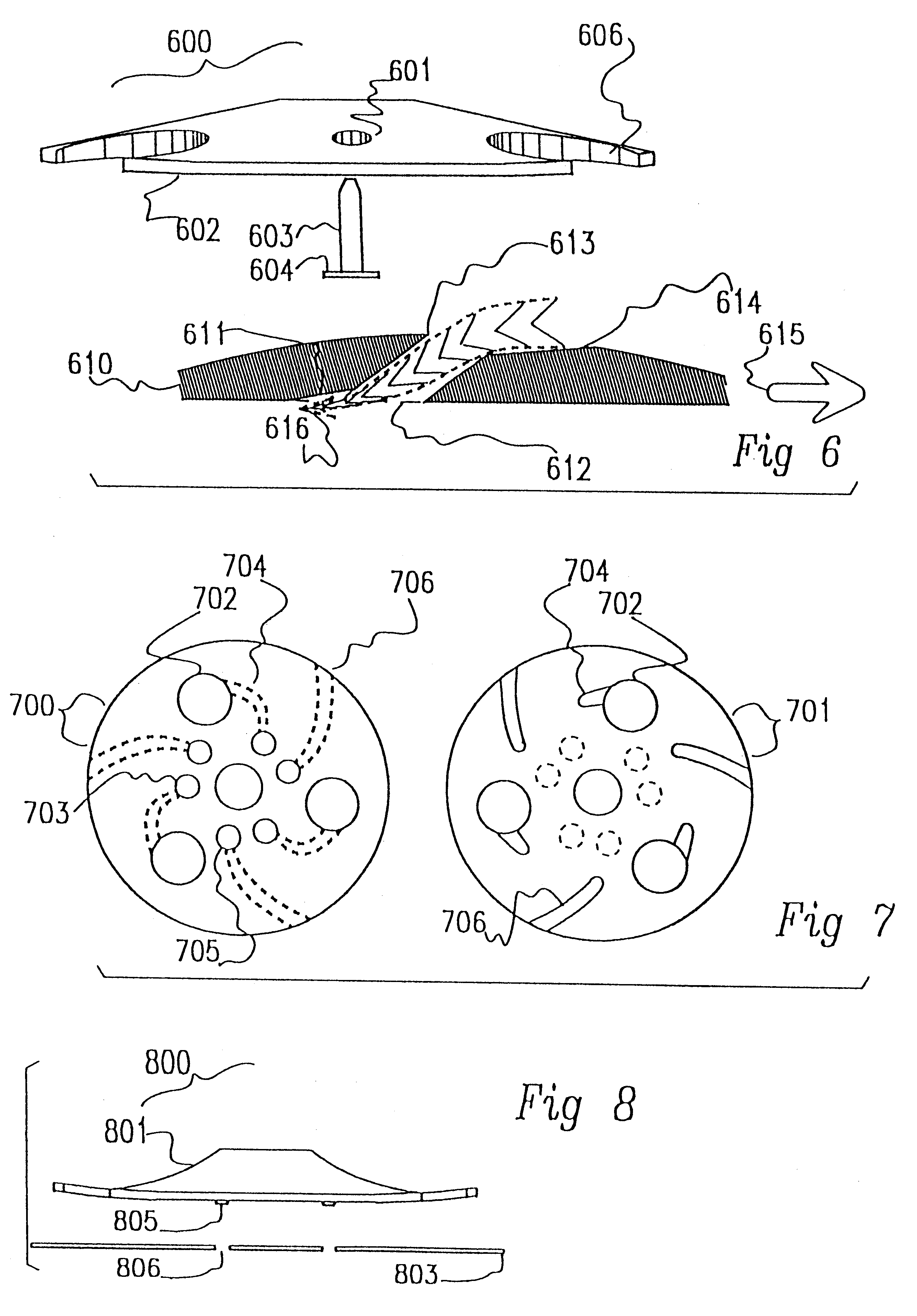Sanding disks
a technology of sanding disks and disks, which is applied in the direction of gear teeth, gear teeth, manufacturing tools, etc., can solve the problems of unsatisfactory scalloped surface of work surfaces, inability to use disks for finely controlled work, and sanding block treatment, so as to protect users from injury
- Summary
- Abstract
- Description
- Claims
- Application Information
AI Technical Summary
Benefits of technology
Problems solved by technology
Method used
Image
Examples
example
In this Example the advantages of the disks in which chord segments are removed to produce an abrasive disk. In this Example, four disks are compared for grinding performance. The first disk, (D), is a prior art disk with a diameter of 11.4 cm (4.5 inches) with a central mounting aperture used in the typical prior art fashion with only the outer periphery actually used for grinding. This was done by having the area of contact on the workpiece overlap the perimeter. The second, (B) was identical to the D disk except that full contact was maintain with the full workpiece by moving the location of engagement between the disk and the workpiece to the same location used with the other disks. The third disk, (C), was an identical disk but modified to make it according to the invention by being provided with three viewing apertures as shown in FIG. 24 (2400) of the drawings except for the omission of features 2401 and 2402. The fourth disk, (A), was a disk similar to disk C except that cho...
PUM
 Login to View More
Login to View More Abstract
Description
Claims
Application Information
 Login to View More
Login to View More - R&D
- Intellectual Property
- Life Sciences
- Materials
- Tech Scout
- Unparalleled Data Quality
- Higher Quality Content
- 60% Fewer Hallucinations
Browse by: Latest US Patents, China's latest patents, Technical Efficacy Thesaurus, Application Domain, Technology Topic, Popular Technical Reports.
© 2025 PatSnap. All rights reserved.Legal|Privacy policy|Modern Slavery Act Transparency Statement|Sitemap|About US| Contact US: help@patsnap.com



